- Home
- Richard Dawkins
The Greatest Show on Earth Page 41
The Greatest Show on Earth Read online
Page 41
The Second Law of Thermodynamics states that, although energy can be neither created nor destroyed, it can – must, in a closed system – become more impotent to do useful work: that is what it means to say that ‘entropy’ increases. ‘Work’ includes things like pumping water uphill or – the chemical equivalent – extracting carbon from atmospheric carbon dioxide and using it in plant tissues. As already spelled out in Chapter 12, both those feats can be achieved only if energy is fed into the system, for example electrical energy to drive the water pump, or solar energy to drive the synthesis of sugar and starch in a green plant. Once the water has been pumped to the top of the hill, it will then tend to flow downhill, and some of the energy of its downward flow can be used to drive a water wheel, which can generate electricity, which can drive an electric motor to pump some of the water uphill again: but only some! Some of the energy is always lost – though never destroyed. Perpetual motion machines (you can’t say it too dogmatically) are impossible.
In life’s chemistry, the carbon extracted from the air by sun-driven ‘uphill’ chemical reactions in plants can be burned to release some of the energy. We can literally burn it in the form of coal, which you can think of as stored solar energy, for it was put there by the solar panels of long-dead plants in the Carboniferous age and other past times. Or the energy may be released in a more controlled way than actual combustion. Inside living cells, either of plants or of animals that eat plants, or of animals that eat animals that eat plants (etc.), sun-made carbon compounds are ‘slow-burned’. Instead of literally bursting into flames, they give up their energy in a serviceable trickle, where it works in a controlled manner to drive ‘uphill’ chemical reactions. Inevitably, some of this energy is wasted as heat – if it were not, we’d have a perpetual motion machine, which is (you can’t say it too often) impossible.
Almost all the energy in the universe is steadily being degraded from forms that are capable of doing work to forms that are incapable of doing work. There is a levelling off, a mixing up, until eventually the entire universe will settle into a uniform, (literally) uneventful ‘heat death’. But while the universe as a whole is hurtling downhill towards its inevitable heat death, there is scope for small quantities of energy to drive little local systems in the opposite direction. Water from the sea is lifted into the air as clouds, which later deposit their water on mountaintops, from which it runs downhill in streams and rivers, which can drive water wheels or electric power stations. The energy to lift the water (and hence to drive the turbines in the power stations) comes from the sun. This is not a violation of the Second Law, for energy is constantly being fed in from the sun. The sun’s energy is doing something similar in green leaves, driving chemical reactions locally ‘uphill’ to make sugar and starch and cellulose and plant tissues. Eventually the plants die, or they may be eaten by animals first. The trapped solar energy has the opportunity to trickle down through numerous cascades, and through a long and complex food chain culminating in bacterial or fungal decay of the plants, or of the animals that prolong the food chain. Or some of it may be sequestered underground, first as peat and then as coal. But the universal trend towards ultimate heat death is never reversed. In every link of the food chain, and through every trickle-down cascade within every cell, some of the energy is degraded to uselessness. Perpetual motion machines are . . . all right, that’s enough repetition, but I won’t apologize for quoting, as I have done in at least one previous book, the marvellous saying of Sir Arthur Eddington on the subject:
If someone points out to you that your pet theory of the universe is in disagreement with Maxwell’s equations – then so much the worse for Maxwell’s equations. If it is found to be contradicted by observation – well, these experimentalists do bungle things sometimes. But if your theory is found to be against the second law of thermodynamics I can give you no hope; there is nothing for it but to collapse in deepest humiliation.
When creationists say, as they frequently do, that the theory of evolution contradicts the Second Law of Thermodynamics, they are telling us no more than that they don’t understand the Second Law (we already knew that they don’t understand evolution). There is no contradiction, because of the sun!
The whole system, whether we are talking about life, or about water rising into the clouds and falling again, is finally dependent on the steady flow of energy from the sun. While never actually disobeying the laws of physics and chemistry – and certainly never disobeying the Second Law – energy from the sun powers life, to coax and stretch the laws of physics and chemistry to evolve prodigious feats of complexity, diversity, beauty, and an uncanny illusion of statistical improbability and deliberate design. So compelling is that illusion that it fooled our greatest minds for centuries, until Charles Darwin burst on to the scene. Natural selection is an improbability pump: a process that generates the statistically improbable. It systematically seizes the minority of random changes that have what it takes to survive, and accumulates them, step by tiny step over unimaginable timescales, until evolution eventually climbs mountains of improbability and diversity, peaks whose height and range seem to know no limit, the metaphorical mountain that I have called ‘Mount Improbable’. The improbability pump of natural selection, driving living complexity up ‘Mount Improbable’, is a kind of statistical equivalent of the sun’s energy raising water to the top of a conventional mountain.* Life evolves greater complexity only because natural selection drives it locally away from the statistically probable towards the improbable. And this is possible only because of the ceaseless supply of energy from the sun.
‘FROM SO SIMPLE A BEGINNING’
We know a great deal about how evolution has worked ever since it got started, much more than Darwin knew. But we know little more than Darwin did about how it got started in the first place. This is a book about evidence, and we have no evidence bearing upon the momentous event that was the start of evolution on this planet. It could have been an event of supreme rarity. It only had to happen once, and as far as we know it did happen only once. It is even possible that it happened only once in the entire universe, although I doubt that. One thing we can say, on a basis of pure logic rather than evidence, is that Darwin was sensible to say ‘from so simple a beginning’. The opposite of simple is statistically improbable. Statistically improbable things don’t spontaneously spring into existence: that is what statistically improbable means. The beginning had to be simple, and evolution by natural selection is still the only process we know whereby simple beginnings can give rise to complex results.
Darwin didn’t discuss how evolution began in On the Origin of Species. He thought the problem was beyond the science of his day. In the letter to Hooker that I quoted earlier, Darwin went on to say, ‘It is mere rubbish, thinking at present of the origin of life; one might as well think of the origin of matter.’ He didn’t rule out the possibility that the problem would eventually be solved (indeed, the problem of the origin of matter largely has been solved) but only in the distant future: ‘It will be some time before we see “slime, protoplasm, etc” generating a new animal.’
At this point in his edition of his father’s letters, Francis Darwin inserted a footnote telling us,
On the same subject my father wrote in 1871: ‘It is often said that all the conditions for the first production of a living organism are now present, which could ever have been present. But if (and oh! what a big if!) we could conceive in some warm little pond, with all sorts of ammonia and phosphoric salts, light, heat, electricity, etc, present, that a proteine compound was chemically formed ready to undergo still more complex changes, at the present day such matter would be instantly devoured or absorbed, which would not have been the case before living creatures were formed.’
Charles Darwin was here doing two rather distinct things. On the one hand he was presenting his only speculation on how life might have originated (the famous ‘warm little pond’ passage). On the other hand, he was disabusing present-day science
of the hope of ever seeing the event replicated before our eyes. Even if ‘the conditions for the first production of a living organism’ are still present, any such new production would be ‘instantly devoured or absorbed’ (presumably by bacteria, we would today have good reason to add), ‘which would not have been the case before living creatures were formed’.
Darwin wrote this seven years after Louis Pasteur had said, in a lecture at the Sorbonne, ‘Never will the doctrine of spontaneous generation recover from the mortal blow struck by this simple experiment.’ The simple experiment was the one in which Pasteur showed, contrary to popular expectation at the time, that broth sealed off from access by micro-organisms would not spoil.
Demonstrations such as Pasteur’s are sometimes cited by creationists as evidence in their favour. The false syllogism runs as follows: ‘Spontaneous generation is never nowadays observed. Therefore the origin of life is impossible.’ Darwin’s 1871 remark was precisely designed as a riposte to that kind of illogicality. Evidently, the spontaneous generation of life is a very rare event, but it must have happened once, and this is true whether you think the original spontaneous generation was a natural or a supernatural event. The question of just how rare an event the origin of life was is an interesting one to which I shall return.
The first serious attempts to think about how life might have originated, those of Oparin in Russia and (independently) Haldane in England, both began by denying that the conditions for the first production of life are still with us. Oparin and Haldane suggested that the early atmosphere would have been very different from the present one. In particular, there would have been no free oxygen, and the atmosphere was thus – as chemists mysteriously call it – a ‘reducing’ atmosphere. We now know that all the free oxygen in the atmosphere is the product of life, specifically plants – obviously, not a part of the antecedent conditions in which life arose. Oxygen flooded into the atmosphere as a pollutant, even a poison, until natural selection shaped living things to thrive on the stuff and, indeed, suffocate without it. The ‘reducing’ atmosphere inspired the most famous experimental attack on the problem of the origin of life, Stanley Miller’s flask full of simple ingredients, which bubbled and sparked for only a week before yielding amino acids and other harbingers of life.
Darwin’s ‘warm little pond’, together with the witch’s brew concocted by Miller that it inspired, are nowadays often rejected as a preamble to advancing some favoured alternative. The truth is that there is no overwhelming consensus. Several promising ideas have been suggested, but there is no decisive evidence pointing unmistakably to any one. In previous books I have attended to various interesting possibilities, including the inorganic clay crystals theory of Graham Cairns-Smith, and the more recently fashionable view that the conditions under which life first arose were akin to the Hadean habitat of today’s ‘thermophilous’ bacteria and archaea, some of which thrive and reproduce in hot springs that are literally boiling. Today, a majority of biologists are moving towards the ‘RNA World theory’, and for a reason that I find quite persuasive.
We have no evidence about what the first step in making life was, but we do know the kind of step it must have been. It must have been whatever it took to get natural selection started. Before that first step, the sorts of improvement that only natural selection can achieve were impossible. And that means the key step was the arising, by some process as yet unknown, of a self-replicating entity. Self-replication spawns a population of entities, which compete with each other to be replicated. Since no copying process is perfect, the population will inevitably come to contain variety, and if variants exist in a population of replicators those that have what it takes to succeed will come to predominate. This is natural selection, and it could not start until the first self-replicating entity came into existence.
Darwin, in his ‘warm little pond’ paragraph, speculated that the key event in the origin of life might have been the spontaneous arising of a protein, but this turns out to be less promising than most of Darwin’s ideas. This isn’t to deny that proteins are vitally important for life. We saw in Chapter 8 that they have the very special property of coiling themselves up to form three-dimensional objects, whose exact shape is specified by the one-dimensional sequence of their constituents, the amino acids. We also saw that the same exact shape confers on them the ability to catalyse chemical reactions with great specificity, speeding particular reactions up perhaps a trillionfold. The specificity of enzymes makes biological chemistry possible, and proteins seem almost indefinitely flexible in the range of shapes that they can assume. That, then, is what proteins are good at. They are very, very good at it indeed, and Darwin was quite right to mention them. But there is something that proteins are outstandingly bad at, and this Darwin overlooked. They are completely hopeless at replication. They can’t make copies of themselves. This means that the key step in the origin of life cannot have been the spontaneous arising of a protein. What, then, was it?
The best-replicating molecule that we know is DNA. In the advanced forms of life with which we are familiar, DNA and proteins are elegantly complementary. Protein molecules are brilliant enzymes but lousy replicators. DNA is exactly the reverse. It doesn’t coil up into three-dimensional shapes, and therefore doesn’t work as an enzyme. Instead of coiling up it retains its open, linear form, and this is what makes it ideal both as a replicator and as a specifier of amino-acid sequences. Protein molecules, precisely because they coil up into ‘closed’ shapes, do not ‘expose’ their sequence information in a way that might be copied or ‘read’. The sequence information is buried inaccessibly inside the coiled-up protein. But in the long chain of DNA the sequence information is exposed and available to act as a template.
The ‘Catch-22’ of the origin of life is this. DNA can replicate, but it needs enzymes in order to catalyse the process. Proteins can catalyse DNA formation, but they need DNA to specify the correct sequence of amino acids. How could the molecules of the early Earth break out of this bind and allow natural selection to get started? Enter RNA.
RNA belongs to the same family of chain molecules as DNA, the polynucleotides. It is capable of carrying what amount to the same four code ‘letters’ as DNA, and it indeed does so in living cells, carrying genetic information from DNA to where it can be used. DNA acts as the template for RNA code sequences to build up. And then protein sequences build up using RNA, not DNA, as their template. Some viruses have no DNA at all. RNA is their genetic molecule, solely responsible for carrying genetic information from generation to generation.
Now for the key point of the ‘RNA World theory’ of the origin of life. In addition to stretching out in a form suitable for passing on sequence information, RNA is also capable of self-assembling, like our magnetic necklace of Chapter 8, into three-dimensional shapes, which have enzymatic activity. RNA enzymes do exist. They are not as efficient as protein enzymes, but they do work. The RNA World theory suggests that RNA was a good enough enzyme to hold the fort until proteins evolved to take over the enzyme role, and that RNA was also a good enough replicator to muddle along in that role until DNA evolved.
I find the RNA World theory plausible, and I think it quite likely that chemists will, within the next few decades, simulate in the laboratory a full reconstruction of the events that launched natural selection on its momentous way four billion years ago. Fascinating steps in the right direction have already been taken.
Before leaving the subject, however, I must repeat the warning I have given in earlier books. We don’t actually need a plausible theory of the origin of life, and we might even be a little bit anxious if a too plausible theory were to be discovered! This glaring paradox arises from the famous ‘Where is everybody?’ question, which was posed by the physicist Enrico Fermi. Enigmatic as his question sounds, Fermi’s companions, fellow physicists at the Los Alamos Laboratory, were attuned enough to know exactly what he meant. Why haven’t we been visited by living creatures from elsewhere in the universe? I
f not visited in person, at least visited by radio signals (which is vastly more probable).
It is now possible to estimate that there are upwards of a billion planets in our galaxy, and about a billion galaxies. This means that, although it is possible that ours is the only planet in the galaxy that has life, in order for that to be true, the probability of life arising on a planet would have to be not much greater than one in a billion. The theory that we seek, of the origin of life on this planet, should therefore positively not be a plausible theory! If it were, life should be common in the galaxy. Maybe it is common, in which case a plausible theory is what we want. But we have no evidence that life exists outside this planet, and at very least we are entitled to be satisfied with an implausible theory. If we take the Fermi question seriously, and interpret the lack of visitations as evidence that life is exceedingly rare in the galaxy, we should move towards positively expecting that no plausible theory of the origin of life exists. I have developed the argument more fully in The Blind Watchmaker, and shall leave it there. My guess, for what it is worth (not much, because there are too many unknowns), is that life is very rare, but that the number of planets is so large (more are being discovered all the time) that we are probably not alone, and there may be millions of islands of life in the universe. Nevertheless, even millions of islands could still be so far apart that they have almost no chance of ever encountering one another, even by radio. Sadly, as far as practicalities are concerned, we might as well be alone.

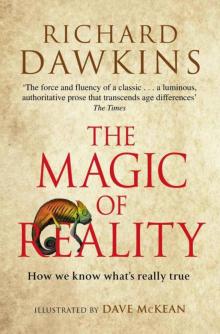 The Magic of Reality
The Magic of Reality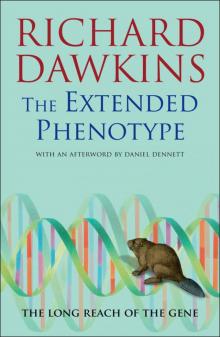 The Extended Phenotype
The Extended Phenotype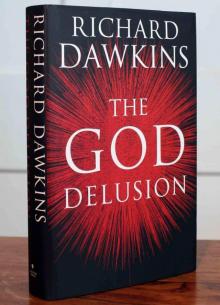 The God Delusion
The God Delusion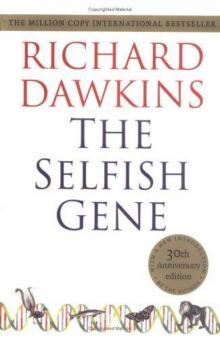 The Selfish Gene
The Selfish Gene The Blind Watchmaker
The Blind Watchmaker The Greatest Show on Earth
The Greatest Show on Earth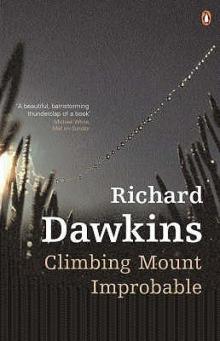 Climbing Mount Improbable
Climbing Mount Improbable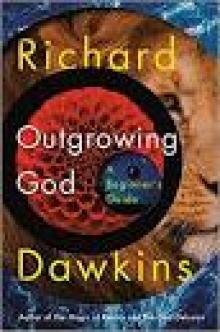 Outgrowing God
Outgrowing God Brief Candle in the Dark
Brief Candle in the Dark The Greatest Show on Earth: The Evidence for Evolution
The Greatest Show on Earth: The Evidence for Evolution Science in the Soul
Science in the Soul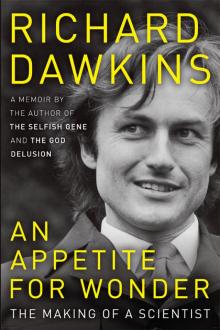 An Appetite for Wonder
An Appetite for Wonder